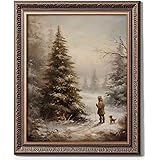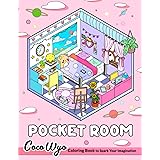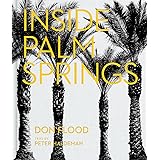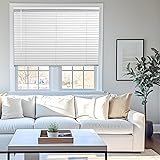The allure of a Vintage English kitchen style transcends fleeting trends, offering a blend of nostalgic charm and robust functionality. As beautifully showcased in the accompanying video, this design philosophy masterfully combines soft pastel tones with the grounding presence of natural wood, culminating in spaces that exude both tranquility and enduring beauty. This detailed exploration delves deeper into the foundational principles and intricate elements that define this beloved aesthetic, offering insights for those aspiring to recreate its timeless appeal.
More than just a decorating scheme, the Vintage English kitchen design is a lifestyle choice, embracing a pace of life that values craftsmanship, comfort, and communal gathering. It is a testament to an era where kitchens were the undisputed heart of the home, places for both labor and heartfelt connection. Understanding its essence is the first step toward crafting a truly authentic and deeply personal space.
Embracing the Enduring Charm of Vintage English Kitchen Design
The enduring popularity of the Vintage English kitchen style lies in its refusal to chase passing fads. Instead, it anchors itself in a design language that has proven its worth over generations. This timelessness is not accidental; it is the deliberate result of balancing simplicity, a comforting sense of nostalgia, and an understated sophistication.
Firstly, imagine a kitchen where every element feels as though it has a story, yet functions flawlessly for modern life. It’s a space that avoids the starkness of minimalism or the fleeting flamboyance of hyper-modern trends, opting instead for a ‘lived-in’ elegance. This approach ensures that your investment in a vintage-inspired remodel will deliver aesthetic returns for decades, providing a consistently welcoming and visually stunning environment.
Pastel Palettes: The Chromatic Heart of a Vintage English Kitchen
The judicious application of pastel colors is paramount to defining the serene atmosphere of a Vintage English kitchen. Far from being merely decorative, these soft hues play a crucial role in shaping the overall feel and light dynamics of the space. They are the gentle whispers that complement, rather than dominate, the rich textures of natural wood.
Selecting Harmonious Hues for Your English Style Kitchen
Powder blue, soft mint green, pale rose, creamy beige, and delicate butter yellow are archetypal choices that imbue a sense of warmth and tranquility. These colors reflect natural light exceptionally well, making rooms feel more expansive and airy, even in smaller footprints. Consider how a soft sage green, for instance, can evoke the rolling English countryside, grounding the space with an organic, calming presence.
Secondly, the subtlety of pastels prevents them from overwhelming the senses, allowing other design elements, such as antique hardware or intricate joinery, to shine. This understated elegance is key to a homely and inviting ambiance, making the kitchen a sanctuary rather than merely a functional zone. Achieving this balance requires a keen eye for undertones, ensuring all chosen shades complement each other seamlessly.
Natural Wood: The Grounding Soul of English Kitchens
Natural wood elements are unequivocally the backbone of any authentic English country kitchen. They provide a vital grounding warmth that perfectly counterbalances the soft ethereal quality of pastel tones. This integration of wood is not just aesthetic; it’s a nod to historical construction and the natural materials readily available in the English landscape.
Choosing the Right Timber and Finish
Whether it’s the sturdy grain of oak, the softer warmth of pine, or the characterful imperfections of reclaimed timber, wood introduces an organic richness that cannot be replicated. Imagine bespoke wooden cabinets, open rustic shelving displaying cherished heirlooms, or a substantial farmhouse table at the room’s core. These elements collectively forge a powerful connection between tradition and practicality, echoing kitchens that have been lovingly passed down through generations, each piece gathering a unique patina.
Thirdly, the choice of finish for your wood is as critical as the species itself. A lightly distressed finish can enhance the antique feel, while a natural wax or oil treatment allows the wood’s inherent beauty to come through, fostering a sense of warmth and authenticity crucial to the Vintage English kitchen style.
Bespoke Cabinetry with a Pastel Touch
Cabinets, painted in gentle pastel shades like mint or cream, are central to defining the Vintage English kitchen aesthetic. They act as expansive canvases, softening the architectural lines of the space while simultaneously drawing attention to the craftsmanship inherent in their wooden doors and handles. This approach transforms utilitarian storage into a sophisticated design statement.
Consider the interplay when these pastel-hued cabinets are paired with contrasting natural wood countertops or open shelving; the harmony achieved is both beautiful and highly functional. It creates visual interest through subtle contrast, ensuring the kitchen feels layered and thoughtfully composed. This strategic use of color on cabinetry ensures that even in a highly functional space, aesthetic cohesion is maintained, aligning with the relaxed yet refined character of an English farmhouse.
Open Shelving: Showcasing Curated Vignettes
A hallmark feature of the English style vintage kitchen is the inclusion of open shelving. This design choice actively resists the modern impulse to hide all kitchenware behind closed doors. Instead, open shelves become stages for proudly displaying an array of items, from everyday dishes and glassware to treasured vintage finds and decorative pottery.
Fourthly, this display opportunity allows for the creation of ‘curated vignettes’ where pastel-colored plates, floral mugs, rustic ceramic jars, and antique copper pots become integral parts of the decor. This adds immense personality and a sense of ‘lived-in’ charm, enhancing the cozy, inviting atmosphere. It’s an opportunity to infuse personal taste and history into the very fabric of the kitchen, contributing significantly to its unique character.
The Farmhouse Table: A Timeless Gathering Point
No English country kitchen would feel complete without the anchoring presence of a substantial farmhouse table. Typically crafted from solid wood, and often boasting a beautifully distressed or naturally aged finish, this piece of furniture transcends its functional purpose to become the undisputed heart of the space. It symbolizes tradition, hospitality, and communal life.
Imagine this table serving as the central hub for boisterous family meals, elegant afternoon teas, or the display of seasonal decor, reflecting the quintessential welcoming spirit of Vintage English living. Its robust construction and generous surface invite gathering, storytelling, and the creation of lasting memories, embodying the very essence of domestic warmth and comfort.
Vintage Appliances: Blending Function with Period Authenticity
To fully commit to the Vintage English kitchen style, appliances must do more than just function; they must actively contribute to the period feel. This involves selecting retro-inspired ovens, cream-colored refrigerators, and classic stove tops that harmonize seamlessly with the overall aesthetic. These choices move beyond mere utility to become integral design elements.
Instead of opting for sleek, ultra-modern machines that might disrupt the delicate balance, classic appliances complement the pastel palette and natural wood details. They ensure the aesthetic remains cohesive and authentic, reinforcing the charm and character of the English farmhouse kitchen. Fifthly, the incorporation of period-appropriate appliances elevates the entire design from merely decorative to genuinely immersive.
The Art of Soft Lighting in a Vintage Kitchen
Lighting in a Vintage English kitchen is more than illumination; it is a design tool that sculpts atmosphere, transforming the space into a cozy sanctuary. The key lies in warm, soft lighting that gently highlights the pastel tones and the rich textures of natural wood, rather than stark, bright illumination.
Think of vintage-style chandeliers or rustic pendant lamps casting a soft, ambient glow. Complementing these, the subtle flicker of candlelight from lanterns or antique wall sconces can introduce a romantic, almost ethereal English countryside ambiance. This layered lighting approach is perfect for intimate seasonal evenings or creating a deeply comforting environment for family gatherings, underscoring the serene beauty of the pastel and natural wood kitchen.
Rustic Flooring Choices: A Foundation of Enduring Style
The floor, often an overlooked element, plays a profound role in anchoring the aesthetic of a Vintage English kitchen. It establishes a timeless foundation that not only withstands the rigors of daily life but also harmonizes with the soft pastel tones above. The right flooring choice grounds the space with durability and rustic elegance.
Timeless Materials for English Kitchen Floors
Options such as classic stone tiles, authentically distressed wooden planks, or the charming regularity of checkerboard patterns are exemplary choices. Imagine robust flagstone, terracotta tiles, or aged oak boards, each adding a layer of historical authenticity and tactile richness. These materials ensure the overall design remains true to its English heritage, providing a beautiful and hard-wearing counterpoint to the softer elements of the room.
Vintage Decor Accents: Breathing Life into the Space
Decor accents are the vital finishing touches that infuse personality and soul into the pastel and natural wood kitchen. These small details transform everyday objects into decorative statements, breathing life into the space and deepening its narrative. They are the curated whispers of history and personal taste.
Consider the charm of vintage ceramic jars, delicate floral china, practical rustic baskets, or gleaming antique copper pots. These elements elevate the kitchen from a functional room to a living, breathing space filled with nostalgic charm and warm English character. Sixthly, the thoughtful placement of such items creates rich visual interest and a sense of continuity, completing the narrative of the Vintage English kitchen style.
Walls That Tell a Story: Textural Backdrops
The treatment of walls in a Vintage English kitchen is crucial for setting the overall mood and providing a canvas for the other design elements. These surfaces often feature inviting pastel shades, or they might be adorned with traditional floral wallpaper, adding a layer of classic English pattern and texture. The choice dramatically influences the room’s character.
Alternatively, exposed brickwork or classic wooden paneling can introduce significant textural interest, creating a layered and rich visual experience. This carefully considered backdrop allows the natural wood furniture and a myriad of vintage accessories to truly shine, ensuring that every component contributes to the calm and beautiful overall kitchen design, reinforcing the inherent warmth and authenticity.
Cozy Seasonal Scents: The Olfactory Dimension
To fully immerse oneself in the experience of a Vintage English kitchen, one must consider the sensory dimension beyond sight and touch – scent. An often-overlooked aspect, seasonal aromas can profoundly enhance the cozy atmosphere, completing the transformation of the kitchen into a truly enveloping space.
Imagine the comforting aroma of fresh-baked bread lingering in the winter air, the delicate fragrance of dried lavender in summer, or the inviting spice of cinnamon and cloves from candles in autumn. These subtle, seasonal olfactory changes enrich the English kitchen design, creating an environment that feels not just warm and lived-in, but deeply comforting and inviting. This holistic approach ensures every detail contributes to the timeless appeal of the Vintage English kitchen style.











